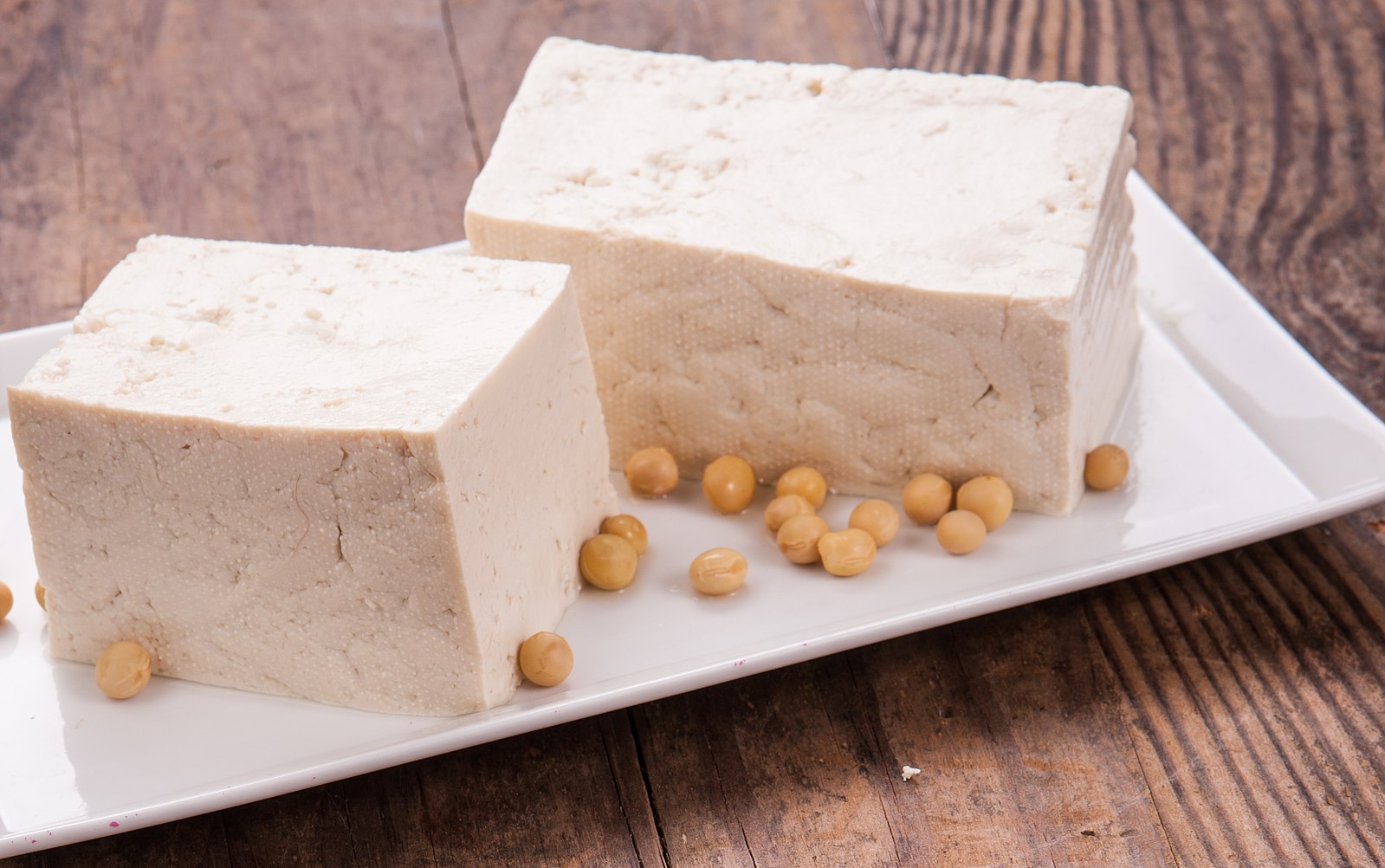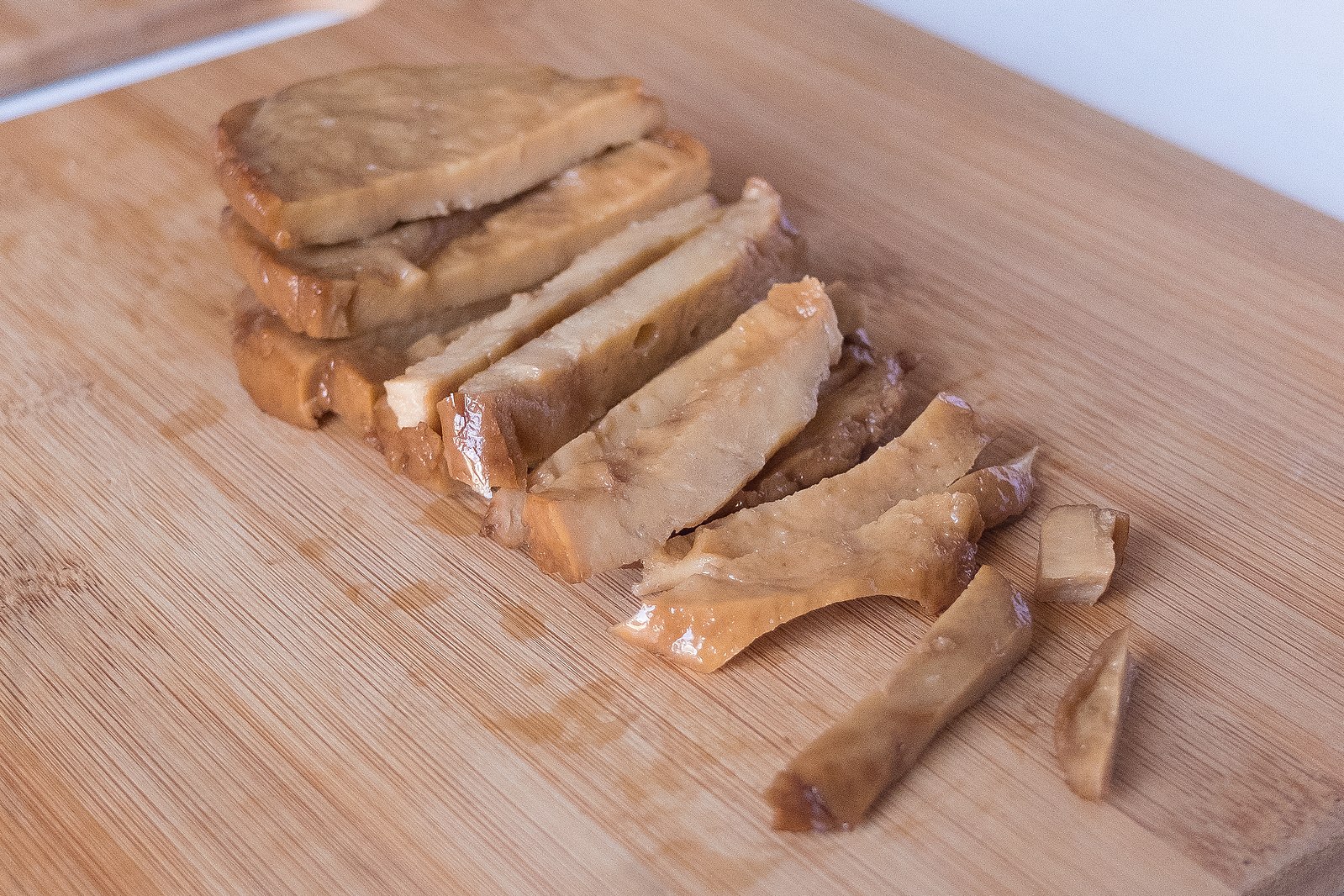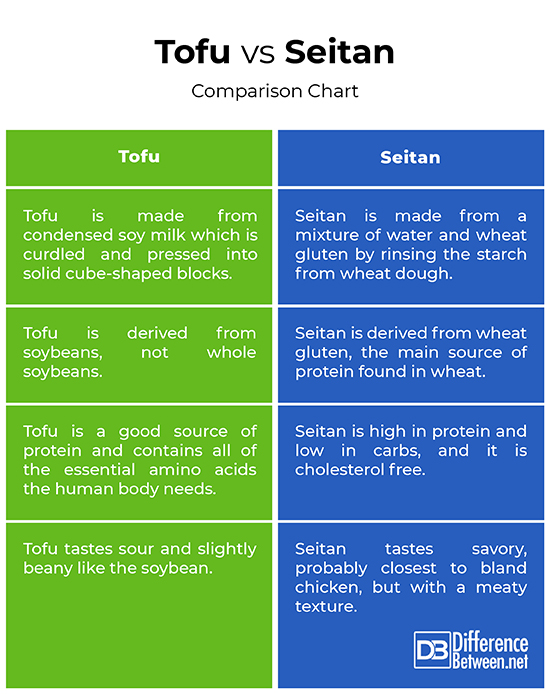Difference Between Tofu and Seitan
Tofu and Seitan are popular plant-based food products that are great replacements for meat. They are all delicious and taste like meat, but they are very different yet easily found in almost every grocery store worldwide. But which one is better – Tofu or Seitan?

What is Tofu?
Tofu, also known as bean curd, is a classic Korean delight made of condensed soy milk which is curdled and then pressed into solid white blocks, just like making cheese. Tofu is not just a name; it’s a symbol of Asian culinary craftsmanship that pervaded many aspects of Asian life and culture. You go to any corner in East or Southeast Asia, and you can find tofu practically anywhere you go, from street side joints to cafeterias and even gourmet restaurants. Many people believe tofu is an ancient food, but no one knows where it came from or who invented it and when. The Boys Market in Los Angeles was the first American supermarket to sell tofu in 1958. However, it was only widely recognized in the 1970s, when it became part of the natural foods and sustainable eating movement.

What is Seitan?
Seitan is a popular meat substitute made completely out of hydrated gluten, which is the main source of protein found in wheat. Often confused with tofu or tempeh, seitan is basically a plant-based product used extensively to create mock meat dishes. Seitan is a great way to incorporate meat-oriented Western palate to vegetarian cuisine. Wheat gluten is not digestible in its raw state; therefore, it must be cooked. The traditional method of making seitan is simmering the dough in a seasoned broth. A gentle simmer is the key when cooking seitan using this method alone. Seitan is a food with a long history. Although not much recognized in the West, seitan has been widely known in China, Japan, Korea, Middle Eastern countries, and other places where wheat is a staple product. Seitan is basically wheat gluten extracted from wheat flour and then cooked.
Difference between Tofu and Seitan
Preparation
– Both tofu and seitan are popular meat substitutes often used in the making of severa vegan and vegetarian dishes. Tofu, also known as bean curd, is a classic Asian staple food made from condensed soy milk which is curdled and then pressed into solid cube-shaped blocks, just like cheese. Seitan, on the other hand, is a wheat-based food made by rinsing the starch from wheat dough. It is basically wheat gluten extracted from wheat flour and then cooked, which leaves strands of gluten.
Nutritional Benefits
– Tofu is a good source of protein and contains all of the essential amino acids the human body need. Since it is gluten-free, it’s low in calories and composed of a wide variety of vitamins and minerals. It is also a good source of iron and calcium, and manganese and phosphorus. It has more fiber, iron, calcium, zinc and folate than chicken. Seitan is wheat-based, yet it’s high in protein and low in carbs, and it is cholesterol free, making it good for heart health.
Taste and Texture
– Both tofu and seitan begin with a slightly neutral taste, but depending on how they are cooked and seasoned, they can take on a wide range of textures and flavors. Seitan is more versatile and its ability to adapt to an amazing range of textures and flavors is what makes seitan so fascinating and unique. For the same reason, seitan can be used to recreate some of your favorite meat dishes in a revised vegetarian mode. Tofu tastes sour and slightly beany like the soybean. Like seitan, tofu can take many forms and flavors, such as sweet, savory, crunchy or spicy by adding seasonings and veggies.
Tofu vs. Seitan: Comparison Chart

Summary
Many people think of tofu as tasteless, rubbery, bland and bitter, like soybean. This is because tofu is derived from condensed soy milk which is curdled and then pressed into solid white blocks, similar to making a cheese. Tofu and seitan both are considered to be great meat substitutes and the taste of meat is something almost everybody truly enjoys and loves. Both are plant-based proteins and they even match the level of proteins found in meat products. They are also quite low in saturated fatty acids, which are believed to be one of the underlying causes of diet-related ailments.
Can I use seitan instead of tofu?
While both seitan and tofu are popular plant-based meat substitutes that provide the same protein quality as other meat-based products, they are not the same. Tofu is derived from soy milk whereas seitan is derived from wheat gluten.
Does seitan really taste like meat?
Seitan is a popular plant-based meat substitute which has the same meaty texture as the real meat. But it’s just a meat substitute, so it cannot be replaced with original meat-based products.
Which has more protein seitan or tofu?
Seitan contains more protein than tofu and most other vegan protein sources.
Which is healthier tofu or seitan?
Tofu is a good source of protein and contains all of the essential amino acids the human body needs, but seitan is a bit higher in protein and lower in fat than tofu. So, in terms of nutritional value, seitan is a bit on the healthier side.
Why is seitan so expensive?
Seitan is a highly processed food waste made completely out of hydrated gluten and has a high-water content, which makes it so expensive than other meat substitutes.
What is the healthiest vegan meat?
Some of the best and the healthiest meat substitutes are tofu, seitan, jackfruit, lentils, chickpeas, and so on.
Can you eat seitan raw?
Wheat gluten is not digestible in its raw state; therefore, it must be cooked.
- Difference Between Caucus and Primary - June 18, 2024
- Difference Between PPO and POS - May 30, 2024
- Difference Between RFID and NFC - May 28, 2024
Search DifferenceBetween.net :
Leave a Response
References :
[0]Image credit: https://commons.wikimedia.org/wiki/File:Seitan_slices_3.jpg
[1]Image credit: https://commons.wikimedia.org/wiki/File:Tofu_4.jpg
[2]Jacobs, Barbara and Leonard Jacobs. Cooking with Seitan: The Complete Vegetarian "wheat-meat" Cookbook. New York, United States: Avery Publishing Group, 1994. Print
[3]Wüthrich, Bruno. Tofu, Tempeh and Seitan. Norderstedt, Germany: Books on Demand, 2020. Print
[4]Conroy, Skye Michael. Crafting Seitan: Creating Homemade Plant-Based Meats. Tennessee, United States: Book Publishing Company, 2021. Print
